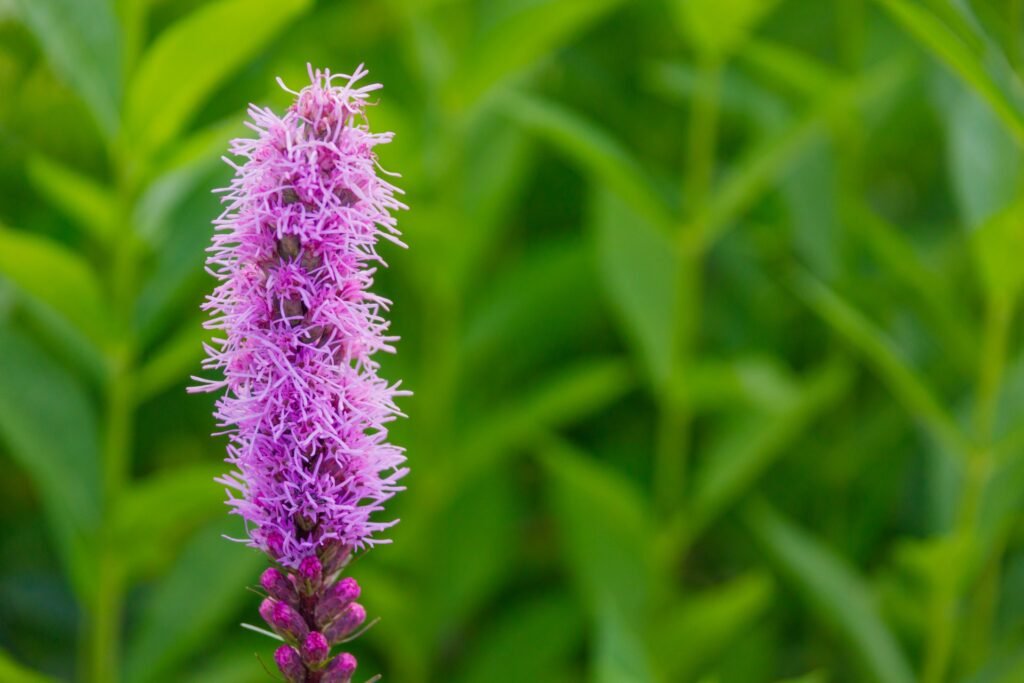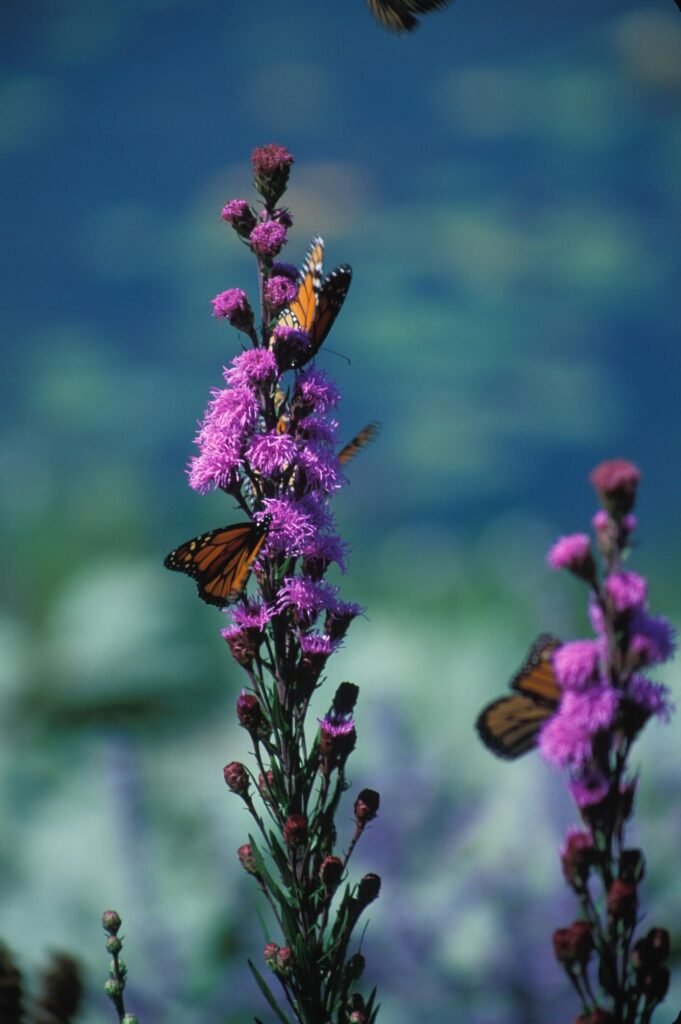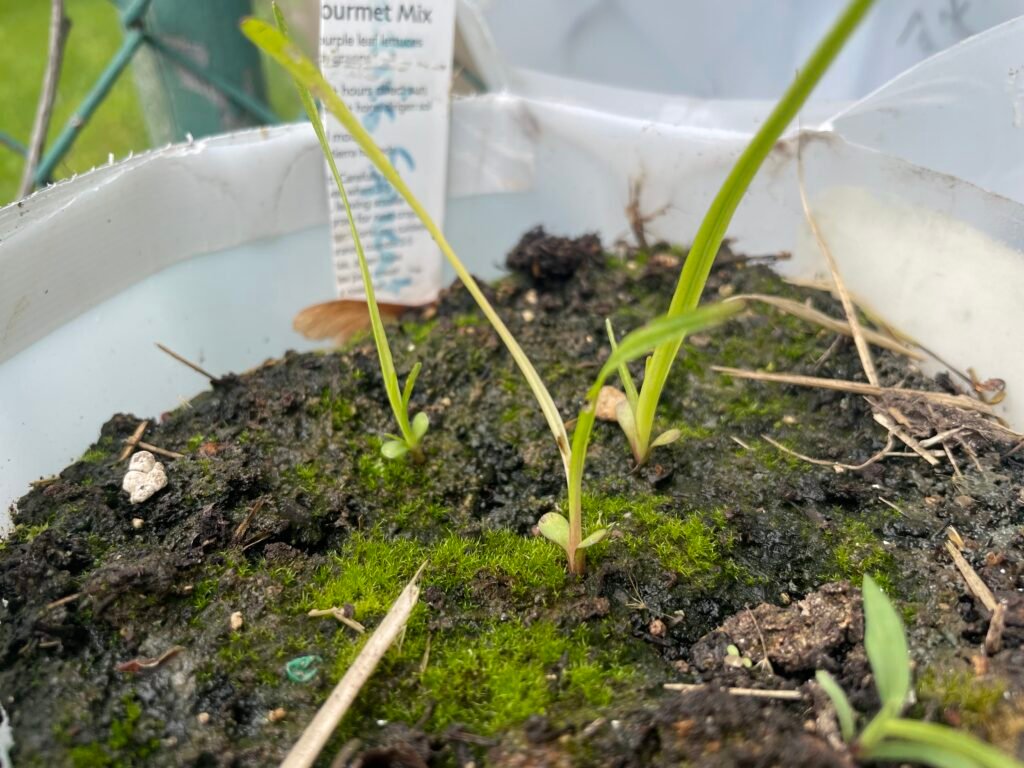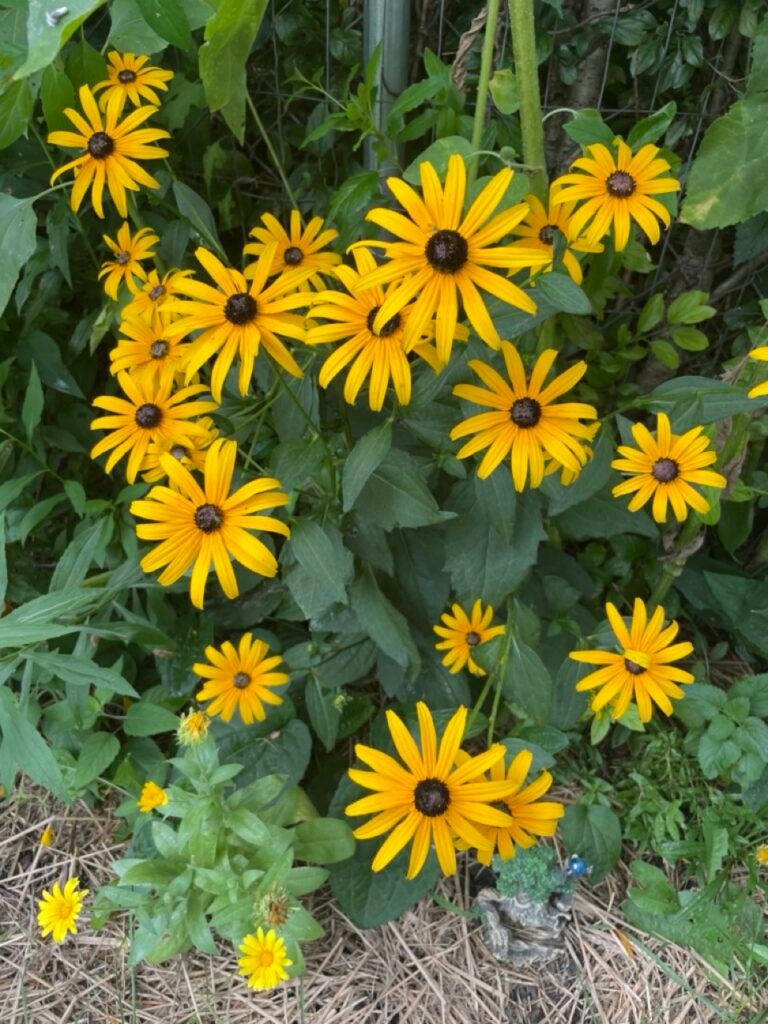Dense Blazing Star (Liatris spicata) stands tall in the native garden, drawing in pollinators with vivid color and late-summer blooms. With its tall, spiky purple blooms and magnetism for butterflies and bees, this perennial is a must-have for pollinator gardens, native landscapes, and meadows.
What is Dense Blazing Star?
The Dense Blazing Star flower is a herbaceous perennial native to much of the eastern and central United States. Thriving in moist prairies, savannas, and open woodlands, it’s known for its upright form and eye-catching flower spikes. Unlike many perennials that bloom from the bottom up, Liatris spicata blooms top-down, creating vertical drama in sunny garden spaces.

Botanical Details:
- Scientific name: Liatris spicata
- Family: Asteraceae (Aster Family)
- Common names: Dense Blazing Star, Gayfeather
- Height: 5 feet tall
- Bloom time: Midsummer to early fall (July to September)
- Flowers: Dense spikes of purple to lavender flowers
- Hardiness zones: USDA 3–10
Why Plant Dense Blazing Star?
Butterfly Favorite
The Dense Blazing Star flower is a top nectar source for Monarch butterflies and other native species like Swallowtails, Fritillaries, and Skippers. Its rich nectar supports pollinators throughout the blooming season, especially during midsummer.
Pollinator Magnet
This plant is highly attractive to native bees, bumble bees, and hummingbirds. In diverse garden settings, Liatris spicata helps create a pollinator corridor, enhancing biodiversity and supporting struggling insect populations.

Growing Conditions
Sunlight:
- Requires full sun for optimal growth and blooming.
- Needs at least 6 hours of direct sunlight per day.
Soil:
- Prefers moist, well-drained soils but tolerates a range of conditions, including clay.
- Ideal for rain gardens, borders, and naturalized plantings.
Water:
- Tolerates short periods of drought once established.
- Performs best with consistent moisture, especially in its early years.
Check out the hive
The Hive is a personalized native plant database, curated from scientific resources and tailored to your exact ecoregion. It offers detailed growing information for over 75 species.
How to Grow Dense Blazing Star
Planting:
- Plant corms or divisions in spring or fall.
- For seeds use stratification (2 months at 40 degrees). Optional: scarification (lightly nick with knife)
- Space plants 12–15 inches apart to allow for upright growth.

Maintenance:
- Deadhead to extend blooming period.
- Cut back stems in late fall or leave standing for winter interest and wildlife cover.
- Easy to divide every few years if clumps become crowded.
Companion Planting
Dense Blazing Star pairs beautifully with other sun-loving natives such as:
- Purple Coneflower (Echinacea purpurea)
- Black-eyed Susan (Rudbeckia hirta)
- Butterfly Milkweed (Asclepias tuberosa)
- Switchgrass (Panicum virgatum)
These combinations create stunning seasonal displays while supporting a wide range of pollinators with overlapping bloom times.

Planting Dense Blazing Star Contributes To:
- Supporting Monarch migration and pollinator health
- Restoring native prairie ecosystems
- Providing vertical texture and visual impact in garden beds
- Improving soil structure and reducing erosion
Host Plant Benefits
Beyond attracting adult pollinators, plants in the Liatris genus serve as host plants for several native moth species. These insects rely on Liatris for part of their life cycle, contributing to a richer and more ecologically supportive garden environment.
Notable species include:
- Glorious Flower Moth (Schinia gloriosa)
- Three-Lined Flower Moth (Schinia trifascia)
- Wavy-Lined Emerald (Synchlora aerata)
- Blazing Star Borer Moth (Carmenta anthracipennis)
By planting the Dense Blazing Star flower, you’re helping to sustain these lesser-known but ecologically important native species.
Final Thoughts
The Dense Blazing Star flower is more than just a beautiful perennial—it’s a valuable native species that plays a vital role in supporting pollinators and restoring natural balance. By planting Liatris spicata, you’re investing in a vibrant, biodiverse ecosystem that will reward you season after season.



